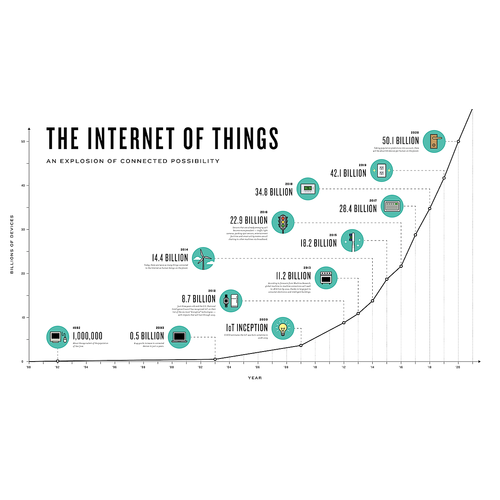
Published on 07/27/2016 | Operations
The dramatic reduction in the cost of data collection and improved analytics are transforming operations across process manufacturing. The first business cases tend to address silos of activity due to the relative simplicity of implementation. However, the true value of connected systems exists in the extraction of business insight from data across the supply chain.
#1 - Data Is the New Black Gold
21st century competitiveness will rely on the ability to access, analyze and act on data.
#2 - Follow the Money
Build an IoT business case as you would any other business case by starting with financial objectives. Prioritize costs to reduce and revenue generation opportunities to explore. Then assess if emerging IoT technologies can accomplish your objectives.
#3 -
#4 -
#5 -
Data is the 'black gold' of the 21st century. And automated data collection is the only feasible way to realize the competitive advantages enjoyed by a 'real-time' enterprise. Manual processes are slow, error prone, and isolated in departmental silos. The ability to automate data collection, analysis, and insight-based action will significantly differentiate high and low performers in every process industry.

Data is the 'black gold' of the 21st century. And automated data collection is the only feasible way to realize the competitive advantages enjoyed by a 'real-time' enterprise. Manual processes are slow, error prone, and isolated in departmental silos. The ability to automate data collection, analysis, and insight-based action will significantly differentiate high and low performers in every process industry.
Environmental costs from energy, waste, and wastewater management quickly add up. However, these costs pale in comparison to the costs of managing an environmental emergency due to weak monitoring and control systems. Factoring environmental costs into operational decision making will improve your bottom line.
IoT solutions are enabling greater visibility operations at a significantly lower cost due to their flexible nature. Previously, CAPEX costs prevented real-time monitoring of most remote locations. The lack of visibility allowed leaks to contaminate environments for months or years before discovery. With the cost of sensors and connectivity falling, the choice between prevention and response has never been clearer.
What does unplanned downtime cost your company? Predictive maintenance is among the clearest IoT use cases. By using trending data and analytics, companies can predict and address adverse events and downtime before they occur.
Most companies continue to rely on two types of maintenance - time-based checkups and emergency response. Today's sensors can be installed on most legacy equipment to collect sufficient data to determine the likelihood and often the cause of a future event. Maintenance can then send the right technician, with the right tools and spare parts, at the right time. If a shutdown is necessary for repairs, it can be scheduled in during the most optimal time (at night or over a weekend for example).
MES is the foundation upon which process controls and automation are built. It also eliminates manual, paper-based systems and provides timely data to decision makers.
The increasing application of sensors on new and legacy equipment means MES systems are more important than ever. Without an integrated system from sensor to cloud, a company is only realizing a fraction of the value of the data it generates.
Non-conformity events will remain a cost of business despite production process improvements. However, their impact can be greatly reduced by establishing role-based visibility and automated workflows internally and across supply chain partners. Connected systems can help to ensure that a quality, non-compliance, or product recall event is identified early, traced to the root cause, and prevented from reoccurring through process improvements.